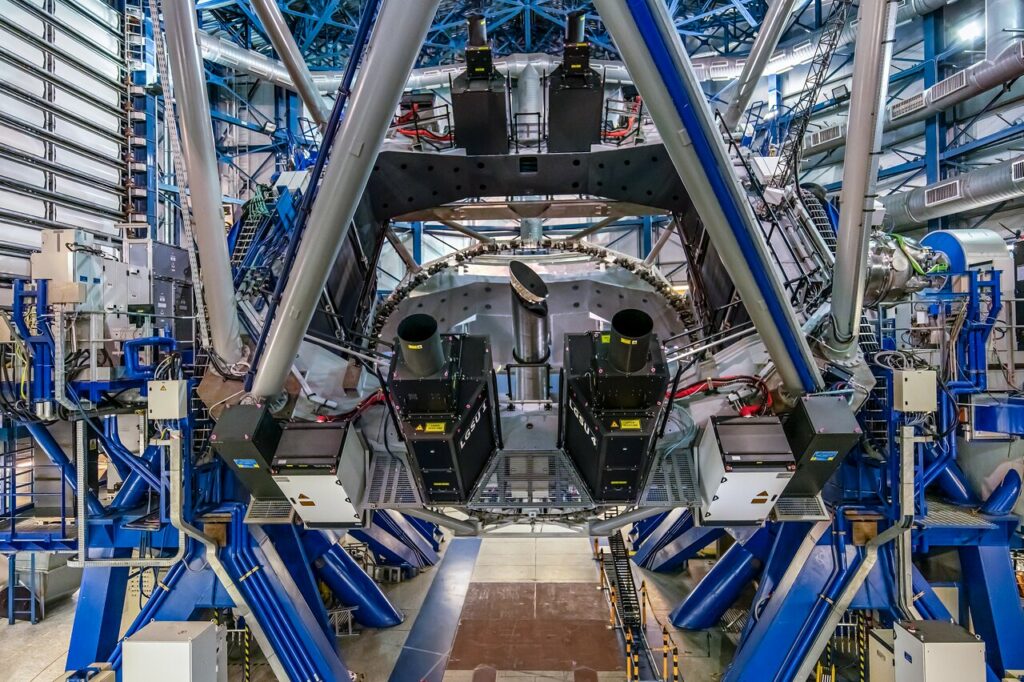The presented image was taken on the territory of the European Southern Observatory. It demonstrates the internal structure of Yepun, one of the Main telescopes that are part of the ESO’s Very Large Telescope (VLT) complex.

In total, the VLT consists of four 8.2-meter Main and four 1.8-meter Auxiliary telescopes. While the Main telescopes are stationary, Auxiliary telescopes are mounted on mobile platforms and can be moved along rails, placing them on 30 prepared platforms. This makes it possible to use VLT as an interferometer with a tunable base.
But still, the main power of VLT is hidden inside the Main telescopes. In particular, several of the observatory’s most advanced instruments, such as the ultra-modern MUSE, HAWK-I and ERIS receivers, are mounted on the same Yepun.
These instruments, created for the study of planets, “stellar nurseries” and supermassive black holes, would never have coped with their tasks without the adaptive optics system AOF. One of its components is a device for forming “artificial stars”. Laser beams shoot out of four black tubes (they can be seen in the image) surrounding the 8.2-meter main mirror of the telescope. The thickness of each Yepun laser beam is 30 cm, and the power is 22 watts. When the laser radiation reaches a height of about 90 km in the Earth’s atmosphere, it excites the sodium atoms located there, and they begin to glow. As a result, a new star is lit in the sky.
Special sensors in each instrument measure the flickering of these artificial stars in real time. Based on these measurements, commands are calculated and sent to the deformable secondary mirror of the telescope, which change the shape of its surface within milliseconds. This makes it possible to compensate for the influence of atmospheric turbulence and obtain images of perfect quality.
Earlier we talked about the device of the system of high-tech wind shields VLT.
According to https://www.eso.org
Follow us on Twitter to get the most interesting space news in time
https://twitter.com/ust_magazine

